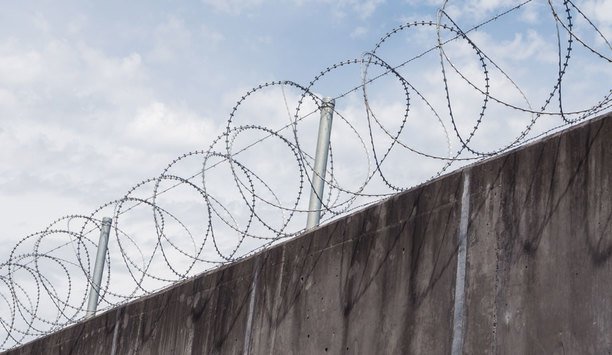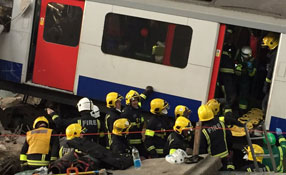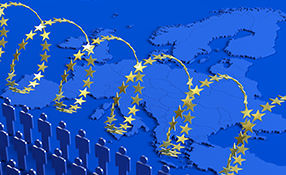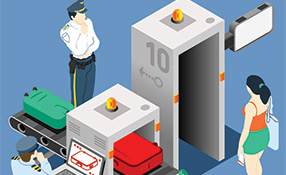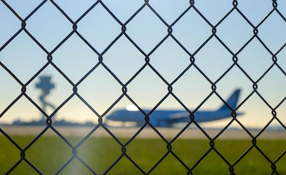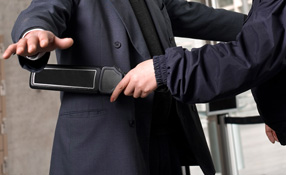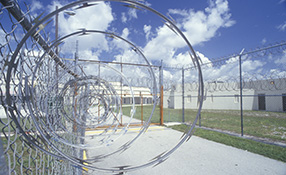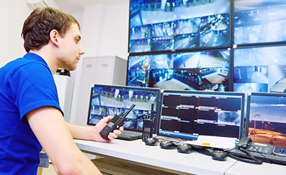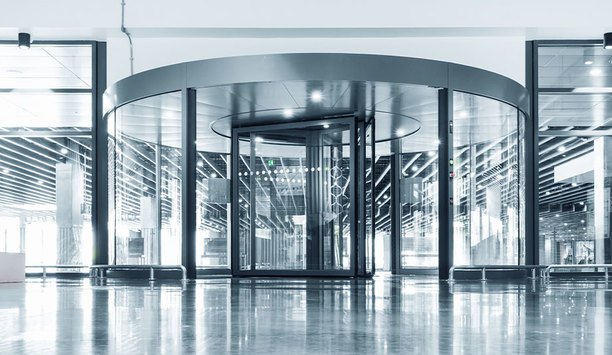 |
| Transport hubs will always be terrorist targets since people congregate in tight clusters (Image credit: deepspace / Shutterstock.com) |
The attack on Ataturk Airport, Istanbul, comes only three months after the bombing of Brussels Airport. Many are considering common elements in terms of modus operandi and likely perpetrators but the similarities are largely superficial.
Airports, like any major transport hub, will always be terrorist targets since people congregate in tight clusters and passengers are likely to include many foreign nationals. Motivation by the two sets of jihadists in March and June may be a unifying factor but otherwise their approaches differ. This is not to say however that effective solutions from the security sector to both types of threat might not be similar.
Similarities To Other Attacks
Istanbul resembles Mumbai or the Bataclan Music Hall (a target of the Paris attacks) more than Brussels in so far as the terrorists carried AK-47 rifles and their explosives were in suicide vests. By contrast, Brussels saw what we now know were so-called Islamic State operatives (unarmed apart from their bombs) bringing peroxide-based explosives to the airport in suitcases.
Terrorism at airports in Moscow (2011), Brussels and now Istanbul has all taken place ‘landside’. Unless terrorists want to capture a plane and use it as a weapon it makes no sense to try and breach ‘airside’ security other than to emphasize our vulnerability. Writing about Brussels several months ago I said that “only airports with particularly chequered pasts in terms of terrorism and sectarian violence (Istanbul, Nairobi and Mumbai) have screening operations at pre-security areas.” I’m rarely prescient, but the mention of Istanbul now seems chilling.
Role Of Airport X-Ray Scanners
In a sense, security at Istanbul succeeded insofar as there are x-ray scanners and checkpoints almost on the perimeter of the building and these would have revealed suicide vests immediately. The terrorists could not proceed more than 100 feet into the terminal without a battle with police officers. Naturally, passengers gather around the scanners waiting to be checked and it is a bottleneck. But had the Istanbul terrorists breached this initial protective measure undetected they might have inflicted greater harm among tighter clusters of people.
There is still no consensus on the order of events but it seems that after they overpowered initial security, the jihadists wandered through the airport, shooting at random before detonating their explosives. There were 44 deaths from the bomb belts and gunfire.
 |
| The attack in Istanbul resembles the attacks in Mumbai or the Bataclan Music Hall as the terrorists carried AK-47 rifles and their explosives were in suicide vests (Image credit: deepspace / Shutterstock.com) |
Refuge Areas
As with many such incidents, airport users and staff improvised safe havens in lavatories, shops and under seating. Would it be sensible for the aviation industry to begin creating refuge areas in terminals? Possibly, but this presents the nightmare scenario of a terrorist disguised as a security officer corralling passengers. (Remember that Anders Breivik lured terrified Norwegian youngsters towards him on the island of Utøya because he was dressed as a policeman.)
Physical Security Technology Possibilities
So what can physical security technology offer to combat incidents like Istanbul? The outlook is not hopeful and we can discount the promises of irresponsible manufacturers who made outrageous claims for video analytics in the wake of the Boston Marathon bombings and have continued doing so. Artificial intelligence such as video analytics needs to move up many gears before it becomes effective in this kind of environment.
Where do we draw the line? Sniffer dogs at motorway service stations, bag checks at adjacent railway stations? This would be simply moving the problem outside |
One obvious avenue is human intelligence and teaching staff how to identify atypical behavior, a practice at which the Israelis excel. On the subject of human rather than technological response; any consideration of the events should note that Turkish police behaved with exceptional courage and lost five of their officers.
A particularly depressing aspect to Istanbul is that the city’s secondary airport (Sabiha Gokcen) had been mortar-bombed by a Kurdish separatist group late last year. There was only one fatality but several parked aircraft were damaged. As a result, Ataturk Airport increased manned guarding throughout and set up the perimeter screening already discussed.
Where To Begin The Security Process
But how many outer security rings can we create? Picture your regular journey to the airport you use most often. Where do we draw the line? Sniffer dogs at motorway service stations, bag checks at adjacent railway stations? This would be simply moving the problem outside. Bear in mind that neither the Brussels nor Istanbul incidents have seen aviation targeted as a specific transport mode. They are assaults on society’s soft underbelly. Preparation for an atrocity at a railway station concourse or a major retail location (both feature people in queues and clusters) must be priorities for the security community.
I said earlier that the two recent airport incidents will share a broad motivation. As I write, no one has claimed responsibility for Istanbul and informed sources are at odds as to who the perpetrators were. This makes the situation even bleaker since until the terrorists are identified there is no scope for preventative SIGINT intelligence gathering to thwart similar events.
We should make no automatic assumption that so-called Islamic State is responsible. The Turkish premier may be reluctant to admit it but the Kurdish militant organization PKK remains a candidate while a taxi driver’s claim that the bombers were using a language he had never heard before surely points to Chechen which is not spoken outside the Caucasus area.
From facial recognition to LiDAR, explore the innovations redefining gaming surveillance



